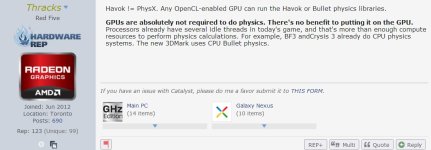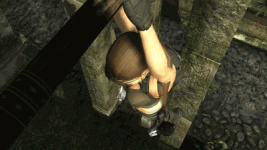BAD HAIR DAYS
Since the dawn of the 3D era, characters in your favorite games have largely featured totally unrealistic hair: blocky and jagged, often without animation that matches your character’s movements. Many games have attempted to disguise the problem with short haircuts, updos, or even unremovable helmets. But why? Simply: realistic hair is one of the most complex and challenging materials to accurately reproduce in real-time. Convincingly recreating a head of lively hair involves drawing tens of thousands of tiny and individual semi-transparent strands, each of which casts complex shadows and requires anti-aliasing. Even more challengingly, these calculations must be updated dozens of times per second to synchronize with the motion of a character.
A NEW FRONTIER OF REALISM
Lara Croft is an iconic character with an equally iconic ponytail. Re-imagining Lara (and her haircut) for the 2013 release of Tomb Raider wasn’t just an opportunity to modernize the character, it was an opportunity to substantially advance in-game realism by tackling the long-standing challenge of unrealistic hair. Through painstaking collaboration between software developers at AMD and Crystal Dynamics, Tomb Raider proudly features the world’s first real-time hair rendering technology in a playable game: TressFX Hair.
[/url]
TressFX Hair revolutionizes Lara Croft’s locks by using the DirectCompute programming language to unlock the massively-parallel processing capabilities of the Graphics Core Next architecture, enabling image quality previously restricted to pre-rendered images. Building on AMD’s previous work on Order Independent Transparency (OIT), this method makes use of Per-Pixel Linked-List (PPLL) data structures to manage rendering complexity and memory usage.
DirectCompute is additionally utilized to perform the real-time physics simulations for TressFX Hair. This physics system treats each strand of hair as a chain with dozens of links, permitting for forces like gravity, wind and movement of the head to move and curl Lara’s hair in a realistic fashion. Further, collision detection is performed to ensure that strands do not pass through one another, or other solid surfaces such as Lara’s head, clothing and body. Finally, hair styles are simulated by gradually pulling the strands back towards their original shape after they have moved in response to an external force. Graphics cards featuring the Graphics Core Next architecture, like select AMD Radeon™ HD 7000 Series, are particularly well-equipped to handle these types of tasks, with their combination of fast on-chip shared memory and massive processing throughput on the order of trillions of operations per second.
WINDY ENVIRONMENTS
Wind tears through a perilous chasm, whipping Lara’s ponytail to the side. With TressFX Hair, each one of her thousands of individualized strands of hair are constantly changing with the windspeed.
RAINY ENVIRONMENTS


 )
)









